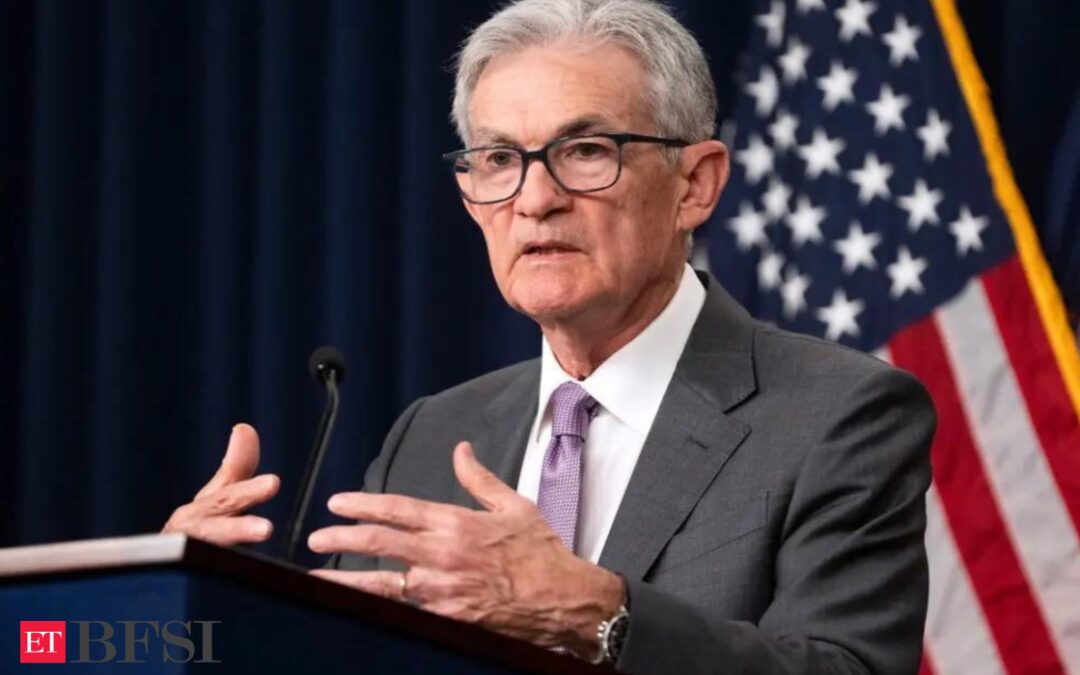Departing from his usual cautious commentary, Fed Chief Jerome Powell unambiguously stated at the Jackson Hole Economic Symposium that “the time has come for policy to adjust.” Clearly, barring unforeseen circumstances, the rate-cutting cycle in the US will start in September.
Powell’s comment, “the upside risk to inflation has diminished and the downside risk to unemployment has increased,” is, without any doubt, a more dovish message than the markets had expected.
Some experts feel that a 100 bps rate cut by the Fed is possible in CY2024. A more realistic scenario is a series of 25 bps rate cuts starting this month.
Fed wins the war on inflation
It is important to appreciate the fact that Powell’s bold statement comes out of his conviction that “inflation is on a sustainable path towards 2 percentage” and that “the upside risk to inflation has diminished.”
The conviction about the downward trajectory of inflation comes from a good analysis of the factors that led to the unexpected spurt in inflation, which peaked in the Summer of 2022, and the factors that drove it down.
Accepting that the ‘transitory inflation’ thesis, which the Fed espoused in the early stage of inflation break-out, was wrong, Powell explained that the pandemic-related shocks to supply and demand and severe shocks to commodity and energy markets were important drivers of inflation.
Now, that these triggers have been reversed, inflation is clearly on the downtrend. Fed’s restrictive monetary policy, by curtailing demand, accelerated the disinflationary trend.
In brief, Powell’s Jackson Hole speech reinforces the US economy’s soft-landing scenario. There are reasons to believe that the war over inflation has been won without pushing the economy into recession. The rate-cutting cycle will begin in September.
Will the MPC follow suit?
This dovish message from the Fed chief and the beginning of the rate-cutting cycle will facilitate rate cuts by the MPC in India.
Already two independent members of the MPC had argued strongly in favour of rate cuts in the August monetary policy meeting.
The pro-rate-cutting argument will grow stronger. India’s CPI inflation declined to 3.54% in July, well within the RBI’s inflation target of 4%.
More importantly, the core inflation is only 3%. The real concern is food inflation, and there is reason to be optimistic on reigning food inflation since the monsoon has been satisfactory so far this year, and Kharif sowing has been good.
The FY25 Q1 results indicate deceleration in corporate profits, which in turn, is partly due to sluggish demand conditions in many segments.
Therefore, it is logical to argue that the time is ripe for rate cut to provide monetary stimulus for growth. Since the government has clearly demonstrated its commitment to fiscal consolidation through a 4.9% fiscal deficit target for FY25, the MPC need not have to unduly worry on fiscal laxity pushing inflation up.
How will the market react?
The stock market will start discounting rate cuts facilitating continuation of the ongoing rally. But the rally will be modest, given the elevated valuations in the market. Investors should understand that there is valuation comfort only in largecaps; mid and smallcap valuations are excessive, driven mainly by domestic liquidity.
But in this market with elevated valuations, financials are attractively valued. The credit-deposit mismatch in the economy and the consequent struggle for deposits has been keeping the valuations of financials, particularly largecap private banks, depressed.
Rate cuts by the RBI will boost the valuations of the bond investments of banks. This will make the sector attractive for investment, given their fair valuations. Other rate-sensitive sectors also will respond positively.
(The author is Chief Investment Strategist, Geojit Financial Services)
(Disclaimer: Recommendations, suggestions, views, and opinions given by experts are their own. These do not represent the views of the Economic Times)










